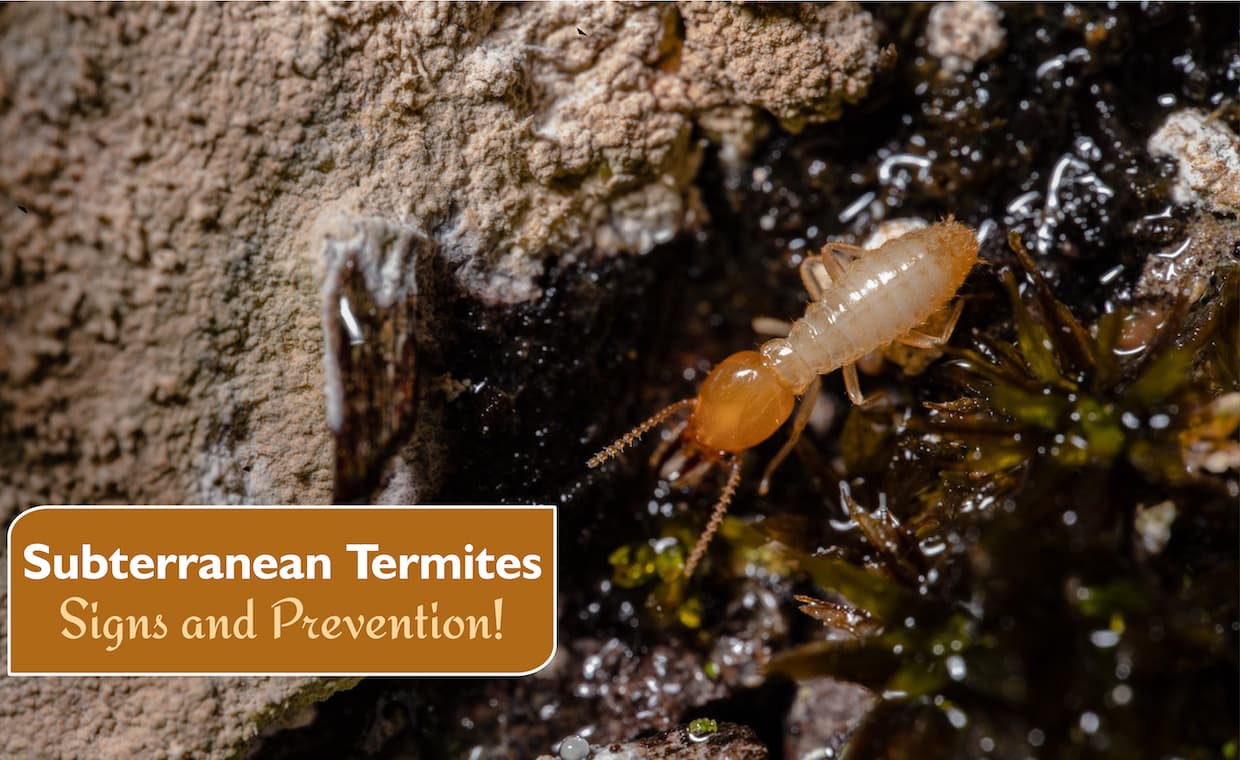
Subterranean termites live in colonies containing caste systems as they are social insects.
There are three definite types, or castes, of subterranean termites with bodily differences, along with reproductives, employees and soldiers.
The reproductives encompass the king, queen and alates.
Signs of an Subterranean Termite Infestation
Subterranean termite infestations can show up on the inner or exterior of the home. There are a number of revealing signs and symptoms of a termite infestation. Presence of mud tubes on the exterior of the home is one of the sign. Mud tubes seem like lengthy tunnels made of timber and soil, which the termites assemble to guard them from drying out as they travel.
Other signs of a subterranean termite infestation consist of softwood in the home that sounds void when tapped, darkening or blistering of timber structures, uneven or fizzy paint, and small heap of feces that looks like sawdust close to a termite nest. Discarded wings close to doorways or on windowsills additionally point out that swarmers have entered and infested the home.
Termites can wreak havoc on your home, with their damage often being mistaken for water damage. If you notice the following signs, you may be dealing with water damage, not termites:
- Buckling wood
- Warped floors
- Swollen or Sagging ceilings
- Cracks in walls and floors
- Doors and Windows that stick
If you’re unsure about the cause of your home issues, it is important to contact a professional pest control provider.
How to Prevent Termite Infestations?
Prevention is the first and foremost technique of subterranean termite control. Pests are attracted to moisture so try to avoid water accumulation near the home’s surroundings. Divert water away with appropriate functioning downspouts, gutters and splash blocks. Decrease dampness in the subway with suitable ventilation. Never bury distressed lumber in the yard. Additionally, be certain to seal cracks and crevices in the home’s foundation to maintain termites out. Most importantly, remove timber contact with the soil, and preserve a one-inch space between the soil and wooden parts of the building.

Termites are a catastrophic pest that can’t be eliminated with selfmade measures. In fact, termites are responsible for property damage of more than $5 billion every 12 months in the United States, a fee commonly no longer protected by way of house owners insurance. In order to proactively forestall these devastating pests, schedule annual expert termite inspections for your home. If you suspect a termite infestation on your property, contact a licensed pest management expert to decide the extent of the hassle and develop a fantastic treatment plan.
Conclusion:
Causing over $2 billion in damages each year, subterranean termites are by some ways the most unfavorable species of termite — accountable for ninety five percent of all termite harm in North America. Capable of collapsing complete buildings, subterranean termites can be a reason for monetary destruction for householders and businesses. The hard, saw-toothed jaws of these termites work like shears to chunk off small fragments of wood, one piece at a time.
That’s why ordinary termite inspections are so vital to retaining these pests – and their potential for high priced harm to your home – at bay.
Before you leave, don’t forget to read below article too:






























